Welcome to the winter wonderland of Yellowstone National Park! As the snow blankets the majestic landscapes, a whole new world of wildlife adventure awaits you. If you’re someone who loves nature and is fascinated by animals, then this winter wildlife of Yellowstone guide is just what you need. We’ll take you through a journey of snow-covered terrains, introducing you to the incredible wildlife that calls this park home during the cold months. So, bundle up, grab a warm drink, and let’s explore the wonders of Yellowstone in winter.
Table of Contents
The Magic of Yellowstone in Winter
Winter in Yellowstone transforms the park into a serene, snow-covered paradise. The park is quieter, with fewer visitors. This tranquility allows for intimate wildlife encounters. Animals are more visible against the white backdrop, making it an ideal time for wildlife watching.
Why Visit Yellowstone in Winter?
- Spectacular Scenery: The park’s geysers steam in the cold air, and the frozen waterfalls offer breathtaking views.
- Unique Wildlife Opportunities: With less foliage, spotting animals becomes easier.
- Peaceful Experience: Fewer tourists mean you can enjoy the park without the crowds.
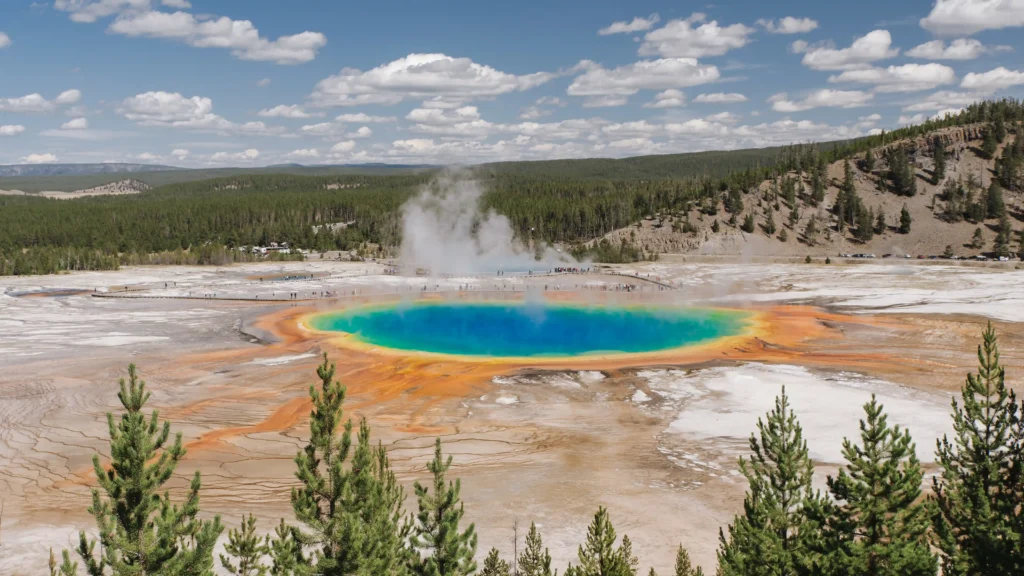
Essential Tips for Visiting in Winter
Before you head out into the cold, here are some tips to make your visit enjoyable and safe:
Dress Appropriately
- Layer Up: Wear thermal layers, a waterproof jacket, and insulated boots.
- Accessories: Don’t forget gloves, a hat, and a scarf to keep warm.
Prepare for the Cold
- Stay Hydrated: Cold weather can be dehydrating, so drink plenty of water.
- Pack Hot Beverages: Warm drinks can provide a much-needed heat boost.
Safety First
- Check Weather Conditions: Before heading out, check the weather for any warnings.
- Stay on the Trails: Wandering off marked paths can be dangerous.
Exploring the Winter Wildlife of Yellowstone
Yellowstone’s wildlife is as diverse as it is fascinating. Here are some of the incredible animals you might encounter:
Bison: The Majestic Behemoths
- Description: Bison are the largest mammals in North America.
- Winter Behavior: They use their heads to sweep away snow, searching for food.
- Viewing Tips: You can often find bison near the park’s geothermal areas, where the ground is warmer.
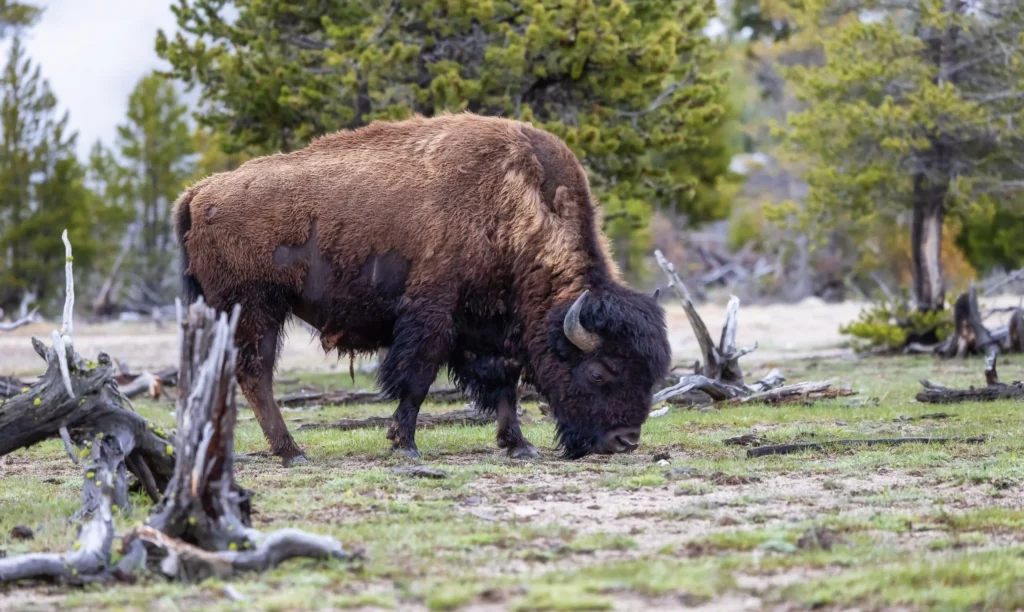
Elk: The Elegant Grazers
- Description: Known for their impressive antlers, elk are a sight to behold.
- Winter Behavior: Elk migrate to lower elevations for the winter.
- Viewing Tips: Lamar Valley is a popular spot to see these magnificent animals.

Wolves: The Elusive Predators
- Description: Wolves are one of Yellowstone’s most iconic predators.
- Winter Behavior: Winter is an excellent time to spot wolves, as they are more active.
- Viewing Tips: Participate in a guided wolf-watching tour for the best chance of sightings.
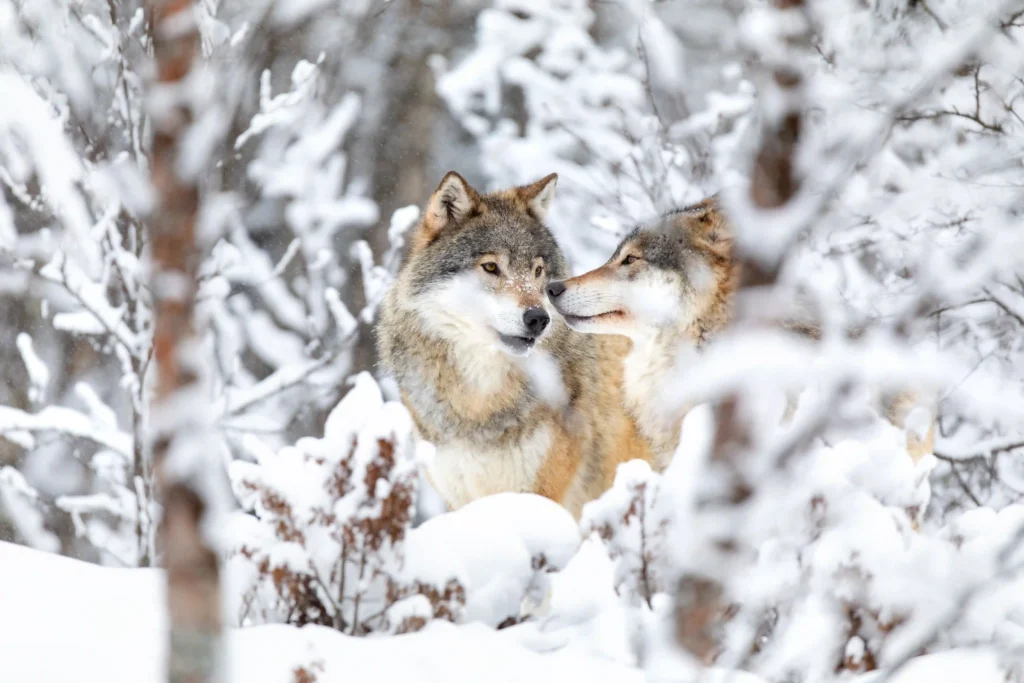
Coyotes: The Clever Survivors
- Description: Smaller than wolves, coyotes are known for their cunning nature.
- Winter Behavior: They adapt well to the cold, hunting in packs or alone.
- Viewing Tips: Look for them near open meadows and thermal areas.
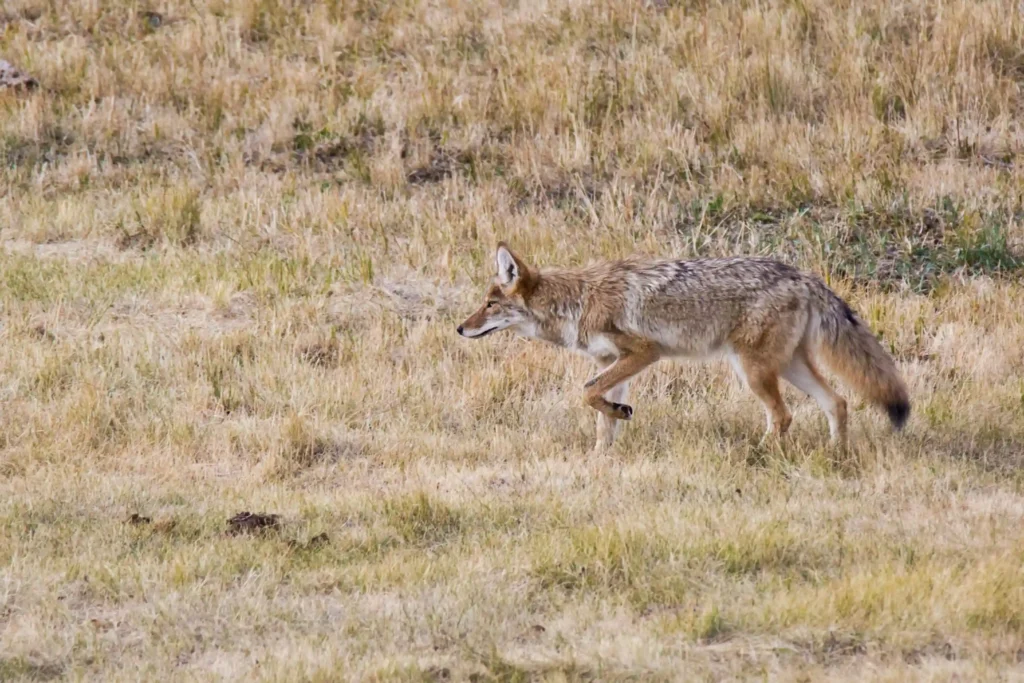
Bald Eagles: The Majestic Flyers
- Description: Recognizable by their white heads and tails, bald eagles are a national symbol.
- Winter Behavior: They often perch near rivers and streams, looking for fish.
- Viewing Tips: Keep an eye on the skies and treetops along the park’s waterways.

Navigating the Park in Winter
Getting around Yellowstone in winter requires some planning, as many roads are closed due to snow.
Snowmobiling: An Adventurous Ride
- Experience: Snowmobiles offer a thrilling way to explore the park’s remote areas.
- Requirements: A guided tour is often necessary unless you have a special permit.
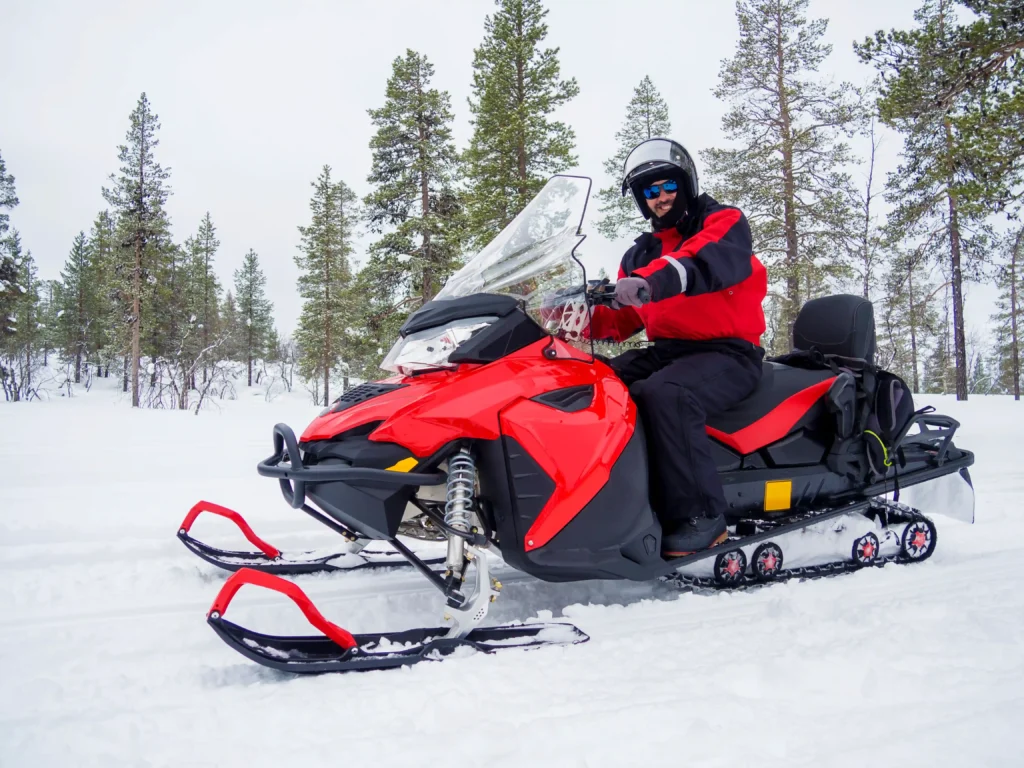
Snowshoeing: A Peaceful Trek
- Experience: Snowshoeing is a quiet, low-impact way to explore winter trails.
- Best Trails: The Mammoth Hot Springs and Lamar Valley offer excellent routes.

Cross-Country Skiing: Glide Through the Snow
- Experience: Skiing allows for a unique perspective of the park’s winter beauty.
- Best Trails: Try the Blacktail Plateau or Tower Fall trails.
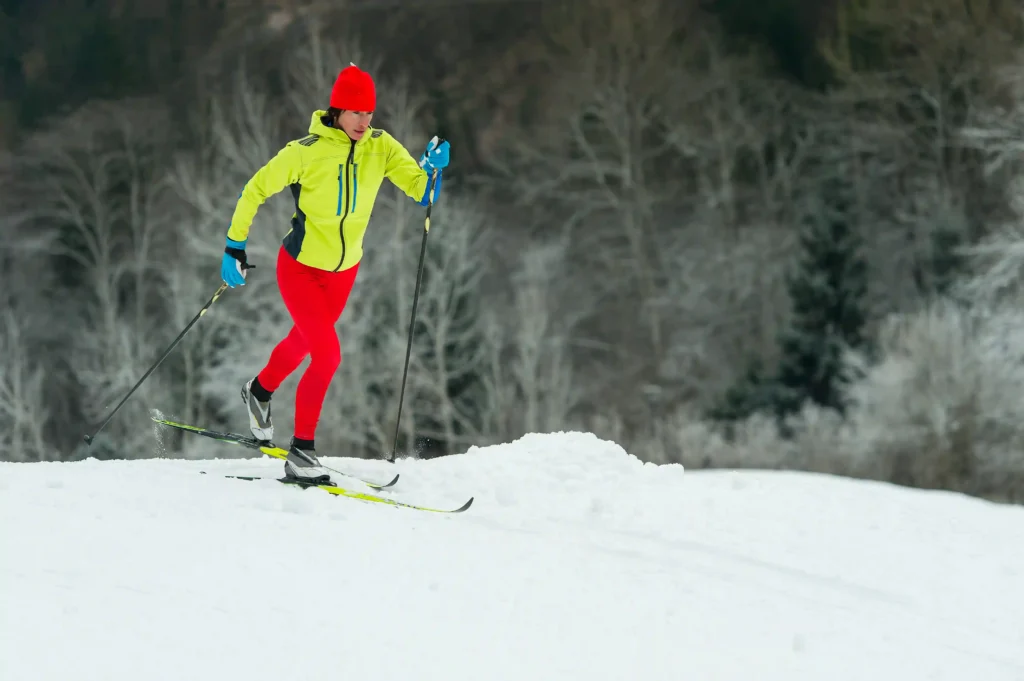
Photography Tips for Capturing Wildlife
Winter offers unique photography opportunities, but it also poses challenges. Here are some tips to get the perfect shot:
Use the Right Equipment
- Camera: A DSLR with a good zoom lens is ideal for wildlife photography.
- Tripod: A stable base helps in low-light conditions.
Techniques for Better Photos
- Use Natural Light: Shoot during the golden hours for the best lighting.
- Focus on the Eyes: Sharp eyes make for engaging wildlife photos.
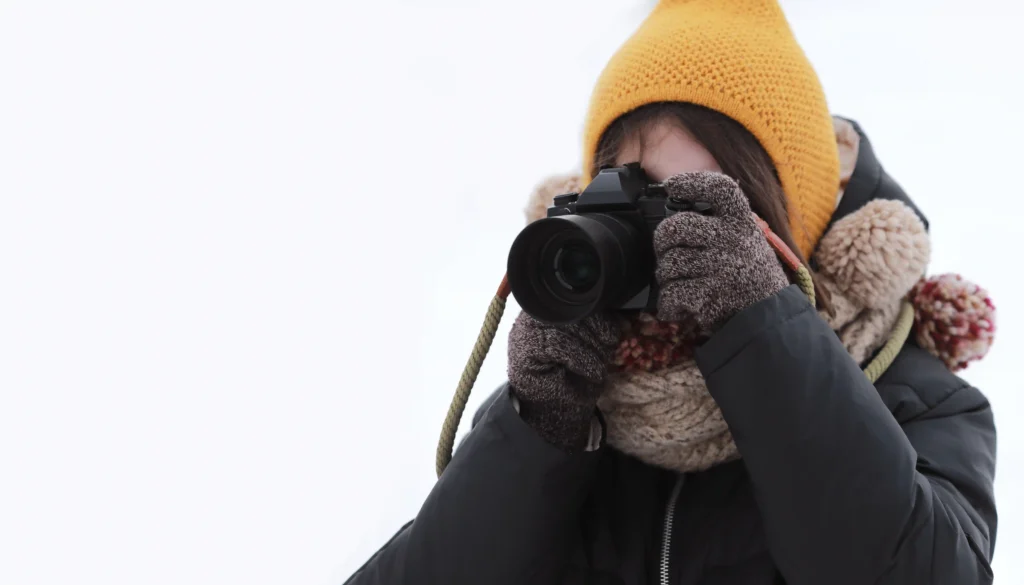
The Importance of Respecting Wildlife
While observing wildlife, it’s crucial to maintain a respectful distance. Here’s why:
Safety for Visitors and Animals
- Maintain Distance: Keep at least 100 yards from bears and wolves, and 25 yards from other animals.
- Do Not Feed Wildlife: Feeding can harm animals and alter their natural behaviors.
Staying Warm and Nourished
Cold weather requires you to keep your energy up.
Meal Planning
- Portable Snacks: Trail mix, energy bars, and hot soup can sustain you on long excursions.
- Warm Meals: Enjoy hot meals at park lodges when possible.
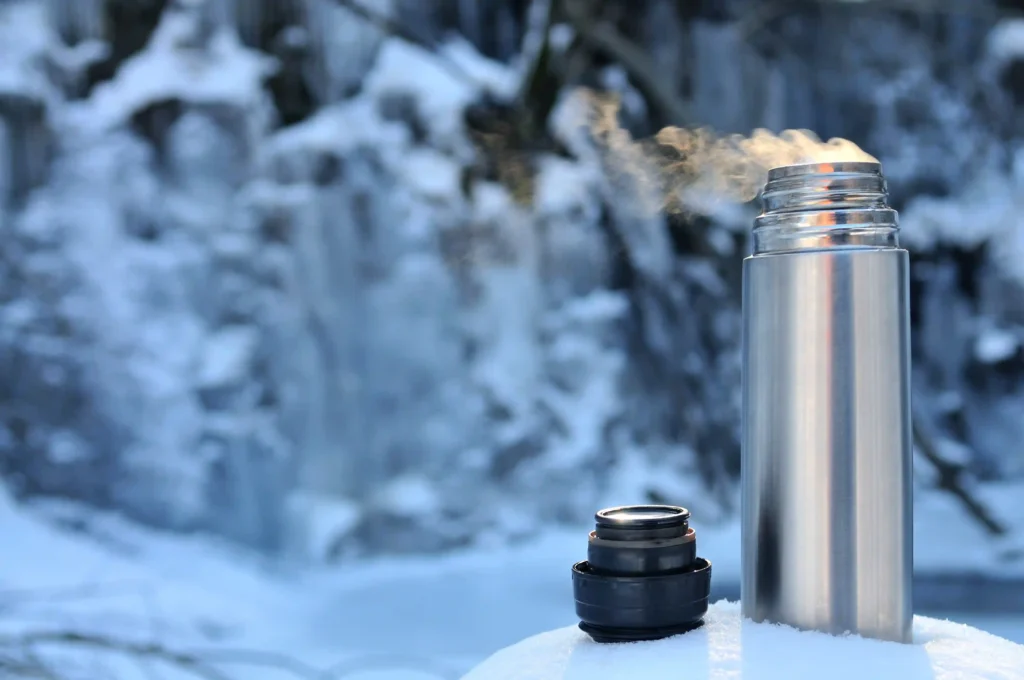
Lodging Options in Winter
Staying inside the park offers a unique experience. Here’s what you need to know:
Winter Lodges
- Availability: Only a few lodges remain open in winter, so book early.
- Facilities: Enjoy warm fireplaces and hearty meals in the cozy lodges.
Conclusion: Embrace the Winter Wonderland
Yellowstone in winter is an experience like no other. With this winter wildlife Yellowstone guide, you’re ready to embrace the park’s snowy landscapes and incredible wildlife. Whether you’re snowmobiling through the park or quietly observing a herd of bison, the memories you create will last a lifetime. So pack your bags, and let the adventure begin.
FAQs
- Why should I visit Yellowstone in winter?
- Winter in Yellowstone offers a more intimate experience with fascinating snowy landscapes and frosty animals, making it ideal for photography, skiing, snowshoeing, and wildlife watching.
- How do I get around the park in winter?
- The road from the North Entrance to the Northeast Entrance is open year-round. Other roads are closed to automobiles and accessible only by over-snow transportation like snowcoaches.
- What’s the best time and place to see wildlife, particularly wolves?
- The best area to see wolves is Lamar Valley in the north, but wildlife can roam, so sightings can vary. Consider joining a Winter Wolf Discovery Package for guided experiences.
- What is the weather like in Yellowstone during winter?
- Winter temperatures range from zero to 20°F during the day and can drop to sub-zero at night, with snowfall averaging 150 inches per year.
